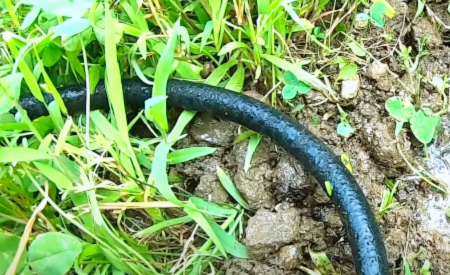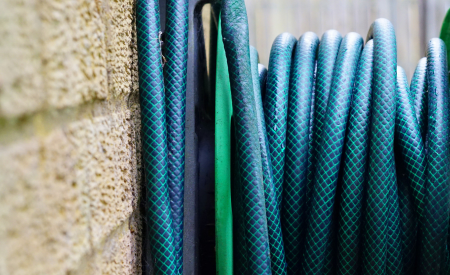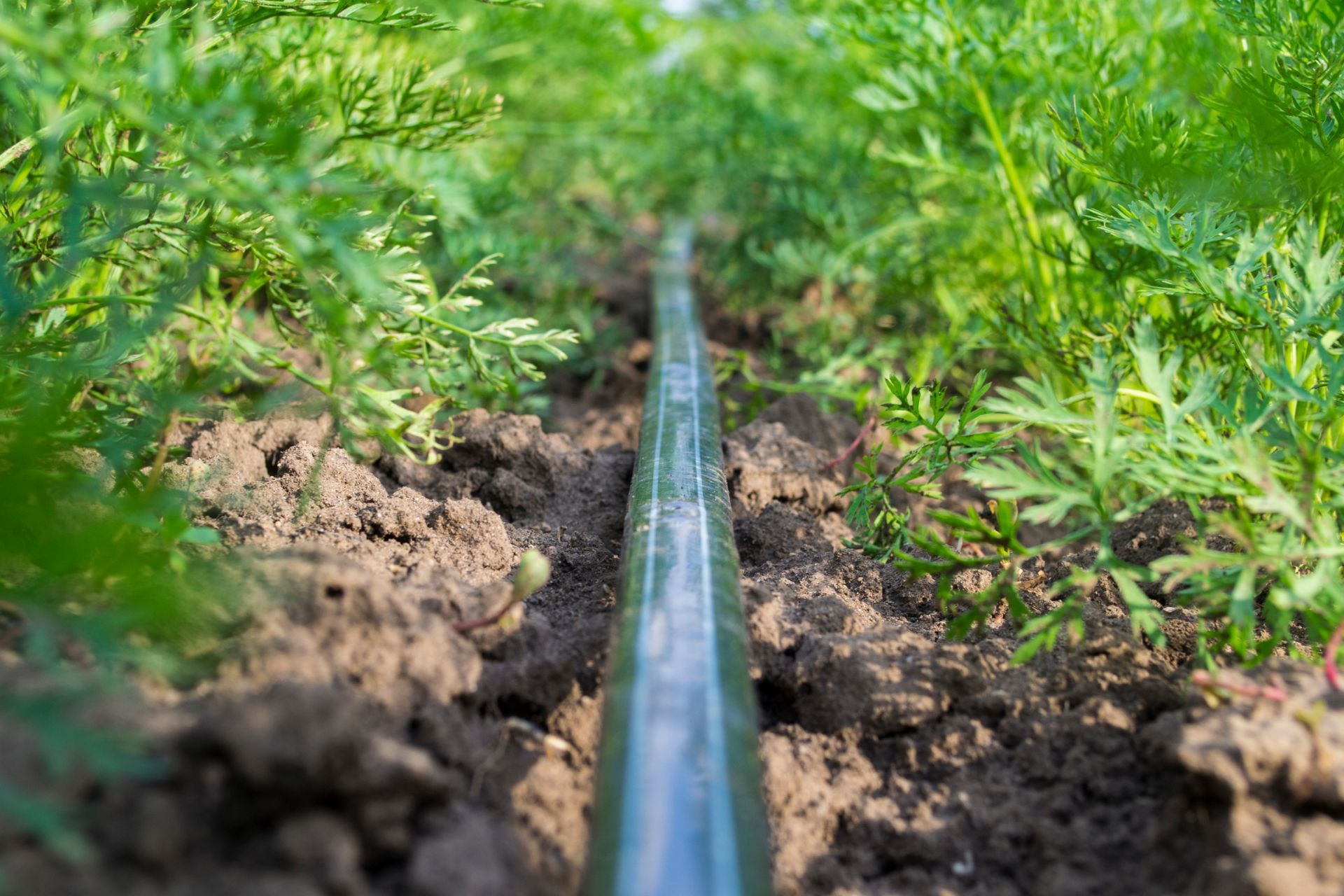How To Use A Soaker Hose

Most people would say using soaker hoses is easy.
And most people would be right.
It is easy.
So why does soaker hose irrigation seem so complicated?
Because soaker hoses break.
Keep reading if you don't know how to use a soaker hose well.
We will walk you through it step by step so you can avoid the most common pitfalls with this pesky irrigation system.
How To Use A Soaker Hose: The Complete Guide

What Are Soaker Hoses?
Soaker hoses are flexible pieces of tubing that have thousands of tiny pores that slowly release water into your garden.
These are different from other types of drip irrigation, such as drip lines or drip tape, which have specific drip emitters at certain locations on the length of their line.
Soaker hoses are great for direct watering right to the roots of your plants.
Why Are Soaker Hoses Used?
Soaker hoses are used because they are a quick and efficient way of getting water directly to a plant's root zone.
The porous material of the soaker hose releases water at a slow and even rate directly into the soil at the base of the plant.
Not only that but using soaker hoses saves:
- Time
- Money
- Plants
- and the environment
They are lightweight, water efficient, and more affordable than drip irrigation.
What's The Difference Between Soaker Hoses and Garden Hoses?

The difference between a soaker hose and a regular garden hose is that the standard garden hose is a long piece of flexible tubing where water flows in through one side of the tubing and out the other.
And a soaker hose is a long piece of flexible and porous tubing where water goes in one end of the tubing and seeps out of the tubing along the entire length of the line.
A garden hose is used for more old-fashioned overhead spraying applications or irrigating water to a specific system, like a sprinkler system.
Soaker hoses are more for gardening because you lay the hose out along the base of the plants to get them water right where it matters: the roots.
I understand the irony of calling the first a garden hose and the second a soaker hose. It's counterintuitive, but life is full of these perplexities.
Just remember a garden hose is a solid hose and a soaker hose is flat until filled with water.
Soaker hoses vs drip tape is a closer battle than against a garden hose.
How To Use A Soaker Hose: Step-By-Step Guide
So you got your new soaker hose system and are ready to work.
You walk over to your raised beds and feel a bit of nerves. Don't be afraid.
It's true. Most soaker hoses fail. So follow these simple steps because the success of your soaker hose depends on it.
Step 1: Connect the Soaker Hose to the Faucet

The first step is to connect the soaker hose to your water supply.
Remember, soaker hoses have a tendency to break if they are over-pressurized.
Think about using these four things on the faucet to prevent excess watering.
- Backflow preventer
- Timer
- Pressure regulator
- Garden hose
Yes, a garden hose.
You connect a garden hose to the faucet instead of the soaker hose for two reason:
- Extra line - you need to be able to use your soaker hose where yo want it, and that's probably not right next to your house
- Level ground - you want the soaker hose to be on level ground as much as possible; they really tend to suffer on slopes, mountains, etc.
Step 2: Decide Where The Soaker Hose Goes
You could actually do this step first if you wanted. But you will need to decide on the place to lay it down.
If that is over a few hundred feet away, you must look into garden hoses.
Some people have plants already in the ground and lay the soaker hose according to those plants.
Others will actually lay the soaker hose down and plant within three inches of the hose to maximize the amount of water they get from the hose.
Step 3: Use The Right Length
Soaker hoses come in 25, 50, or 100 feet with porous holes along the entire length of the line.
Don't buy a 100-foot line if you only need 25 feet. This is unnecessary and inefficient.
You'll be releasing water into the ground for no reason.
Step 4: Level The Hose
Try to avoid laying your soaker hose on steep slopes. They don't water as effectively at an incline.
That's not to say it's impossible - results will vary. But the best way is to lay the soaker hose level to the ground.
Step 5: Correct Spacing
Soaker hoses typically release water about 3 inches out from the hose.
You'll want to plant newer plants closer to the hose and more established plants 1 to 2 inches away.
As the plants grow, you can move the soaker hose away from the base of the plant.
Step 6: Turn The Water on LOW
This is the most important step for not destroying your soaker hose. Don't open the faucet all the way.
Open it about a quarter turn and let the least amount of water out as possible.
Most people turn the hose on full blast and wonder why a leak springs at the beginning of the soaker hose.
Again, you do not want high water pressure.
Other Tips On How To Use A Soaker Hose
Closing The Loop
With soaker hoses, you want to close the loop. What does that mean?
It means you want water to enter the soaker hose from both sides. That means you will need two garden hoses and a couple of High Flow Brass Hose Y with valves.
You connect the hose splitter to your outdoor faucet. Then, you connect a garden hose to each opening.
On the other side of the garden hose, you connect the soaker hose with another valve. Now, you have water flowing into the soaker hose from both ends.
If you don't do this, all the water will come out at one end of the soaker hose. With a closed system, you get water going to the soaker hose with equal pressure.
But before you start the water, make sure to read the next tip.

Low Water Pressure
We said this before but it needs to be said again. Use low water pressure.
Open the faucet a quarter turn and let the water move slowly through the lines.
There is no need to open the faucet the full way. This is not a sprinkler system.
Take Them Inside During Winter
Don't mess around with mother nature. Soaker hoses do not survive outside during cold winter months.
You can't exactly winterize a tubing that water soaks into, and you don't want to let it dry out in the hot sun.
So just roll it up, and bring it inside. Label the tube so you know which one went to what garden bed.
Disadvantages of Soaker Hoses
With everything I've said so far, soaker hoses might sound too good to be true, but let's not get it twisted - soaker hoses come with plenty of disadvantages.
If you don't use them right, soaker hoses can become the biggest nightmare - and even if you do use them right, they can still suck sometimes.
Let me explain.
Leaks
Pretty much anyone who has had a soaker hose has had a soaker hose that leaked. Why?
Most of the time, they just aren't that strong. But other times, you probably turned the water on too high.
Clogging
Soaker hoses can and will clog [1].
Bacterial iron, or bacteria in your well water, can clog your soaker hoses, which can cause the dreaded soaker hose explosion.
Water outside the house is not subject to as much water softener.
Over time, your hoses will become full of that rusty, gelatinous slime that will clog them like cholesterol in your veins.
This is also why we laugh at our childhood selves whenever we think about how we drank hose water.
Other things like calcium and small grains of sand can also clog up your soaker hoses.
Conclusion
That's about it! If you bought a soaker hose and were having trouble using it, hopefully, this guide helps.
Some people do better with their DIY soaker hose system but that's a different story for another day!
Whatever garden watering system you decide to use, make sure you adhere to the requirements of that watering system.
Water flow for a soaker hose will be much different than water flow for a drip irrigation system.
Get out there and get those garden beds popping!
Before you go...
Now that you know how to use a soaker hose, check out our guide on the Best Soaker Hoses of 2023.
You need one that will last through one or two seasons.
Related Articles:

Carl Anderson
Carl Anderson is an avid outdoorsman with a keen interest in writing about and reviewing tools. He has over 20 years of writing experience and the only time he isn't feverishly typing away at his computer is when he's outside in nature working on his projects. You can learn more about him here.
Join our community!
Join to receive guides, insights, and the latest gardening deals!
